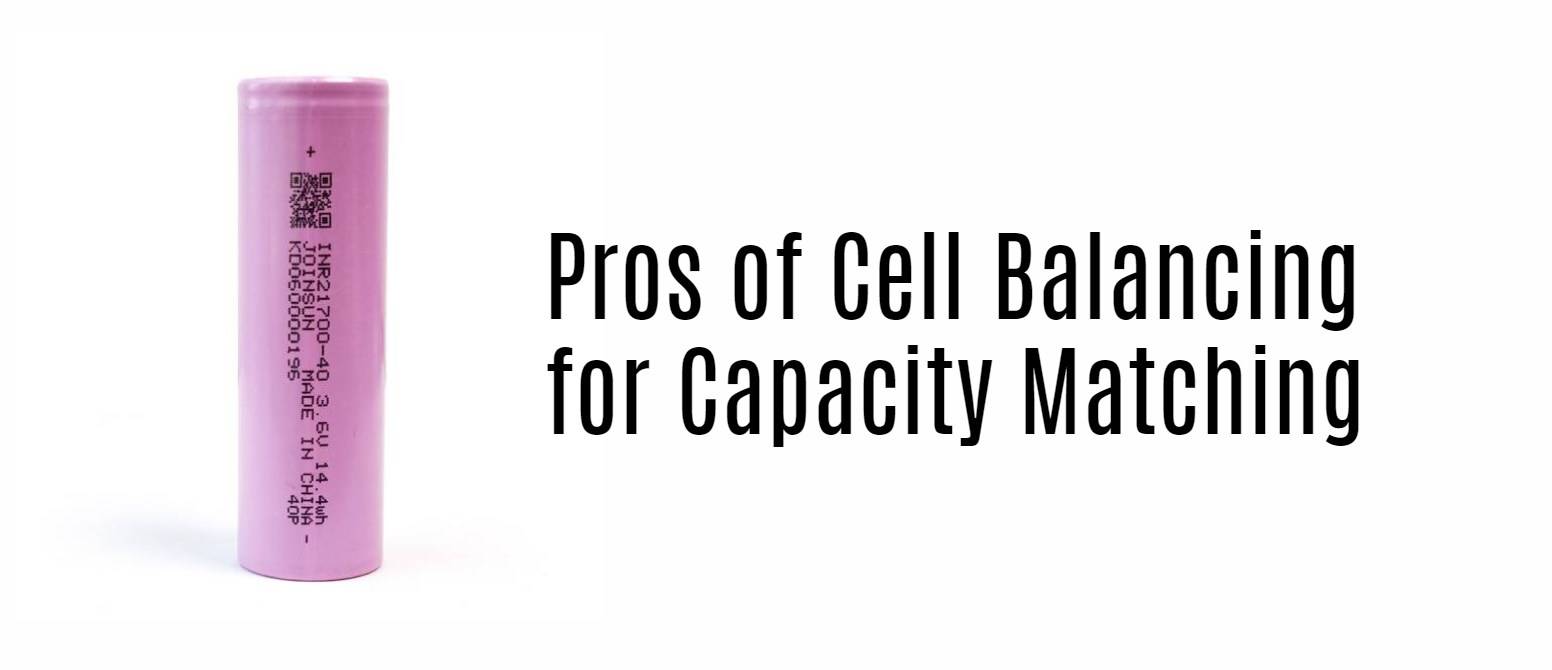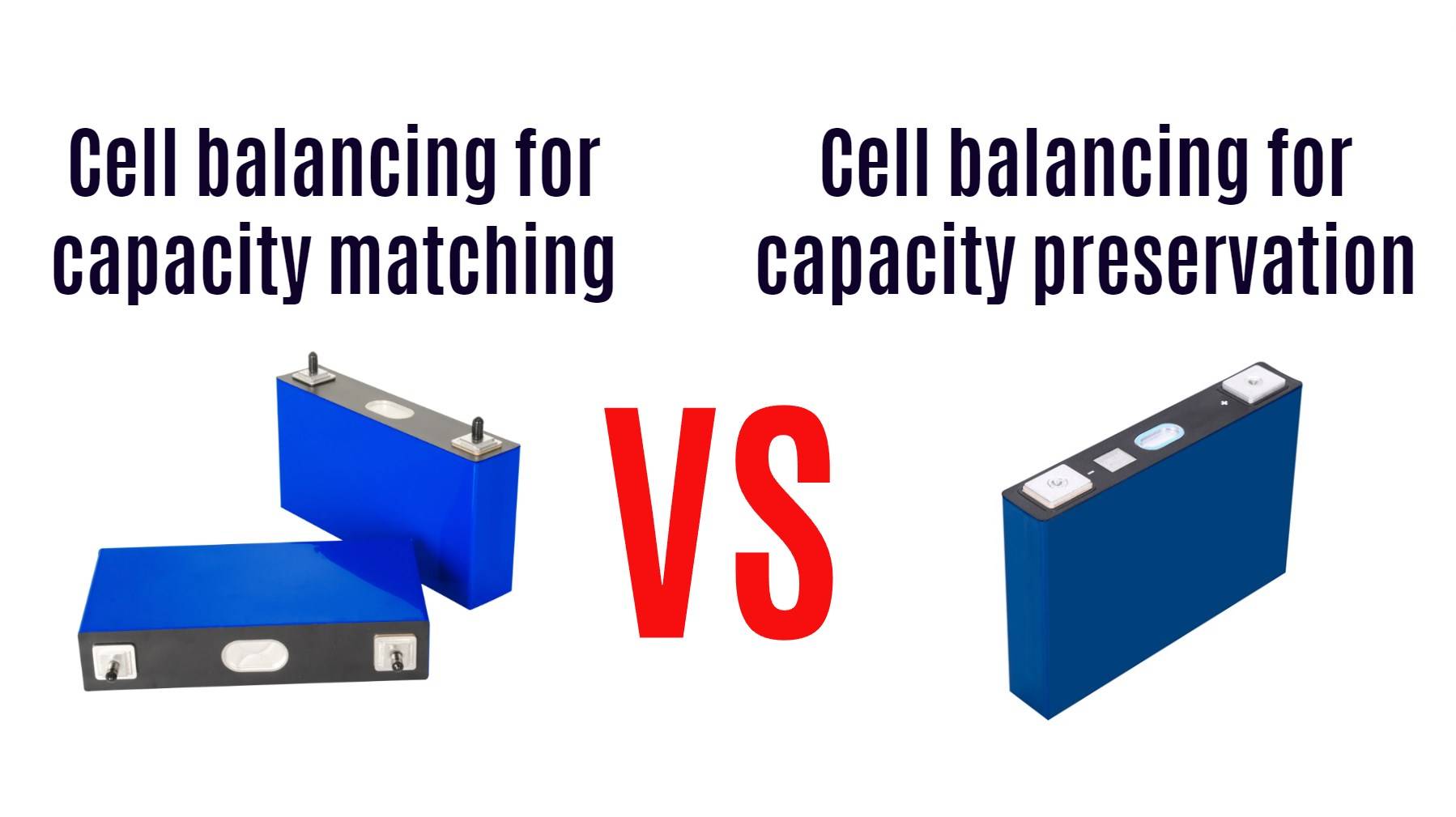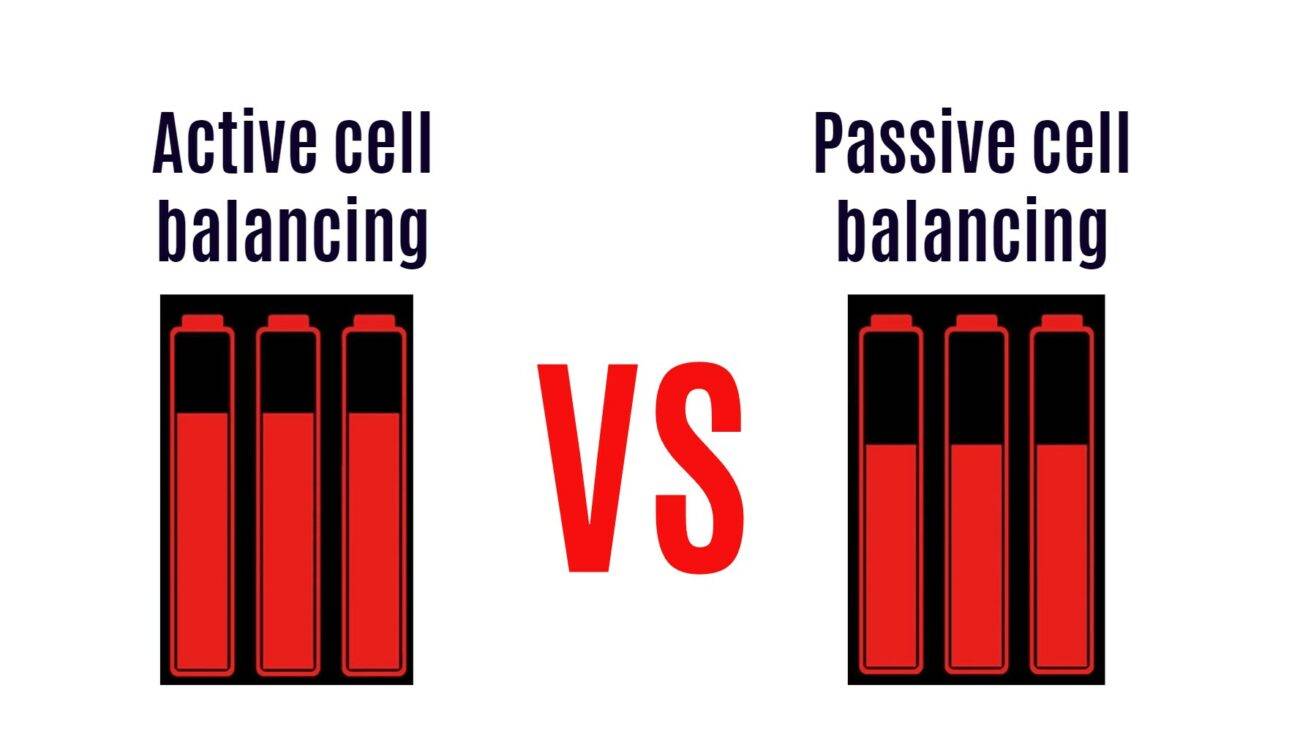Cell balancing is a crucial process in Battery Management Systems (BMS) that aims to optimize battery performance and extend its lifespan. In this blog post, we explore two key techniques: cell balancing for capacity matching and cell balancing for capacity preservation. Discover how these methods promote uniform performance, prevent degradation, and enhance the overall efficiency of your battery system. Let’s dive into the world of cell balancing and unlock the secrets to maximizing your battery’s potential!
What is Cell Balancing for Capacity Matching?
Cell balancing for capacity matching is the process of equalizing the voltages and state of charge among cells when they are fully charged. This ensures that all cells have similar characteristics such as state of charge, self-discharge rate, capacity, impedance, and temperature. Capacity matching aims to maximize the overall capacity of the battery pack by matching the capacity of each cell.
Cell balancing for capacity matching is a crucial process in battery management systems. It involves equalizing the charge level of each cell to ensure they all contribute equally to the overall capacity. This technique aims to address any discrepancies in voltage and energy storage among cells, promoting uniform performance.
By balancing the capacities of individual cells, this method enhances the overall efficiency and longevity of the battery pack. It helps prevent overcharging or overdischarging specific cells, which can lead to premature degradation and reduced performance.
Capacity matching ensures that each cell works harmoniously with others in the system, optimizing power output and extending battery life. Through continuous monitoring and adjustment, this balancing technique maintains consistent performance across all cells within a pack.
What Does Cell Balancing for Capacity Matching Work?
Cell balancing for capacity matching works by equalizing the states of charge among cells within a multi-cell battery. This process ensures that all cells have similar capacities, allowing for the full utilization of the battery pack’s energy. Charge is transferred between cells to equalize their capacities, preventing overcharging or undercharging. By matching the capacities of each cell, the overall capacity of the battery pack is maximized.
Cell balancing for capacity matching works by ensuring that all cells in a battery pack are at the same state of charge. This process involves redistributing energy among the cells to achieve uniformity, which is crucial for optimal performance and longevity.
By monitoring each cell’s voltage and transferring energy between them as needed, cell balancing helps prevent overcharging or undercharging, thus maximizing the overall capacity of the battery pack. This proactive approach also minimizes stress on individual cells, promoting balance and efficiency in the system.
Cell balancing for capacity matching plays a vital role in maintaining consistent performance across all cells within a battery pack. It acts as a safeguard against potential issues like capacity degradation or premature failure, ultimately contributing to enhanced reliability and extended lifespan of the entire power source.
Pros of Cell Balancing for Capacity Matching
Cell balancing for capacity matching provides several advantages. It has the potential to increase the usable capacity of Li-Ion systems by addressing charge loss or capacity loss within a series string. By equalizing the capacities of individual cells, cell balancing maximizes the overall capacity of the battery pack. This improves the life and longevity of the battery pack, ensuring optimal performance and efficiency.
One of the main advantages of cell balancing for capacity matching is that it helps to prolong the overall lifespan of a battery pack. By ensuring that all cells are operating at similar capacities, this method reduces strain on individual cells and promotes more uniform wear and tear across the entire battery.
Another benefit is improved performance consistency. When each cell in a battery pack has a closely matched capacity, the overall performance and efficiency of the system are optimized. This leads to more reliable power delivery and enhanced user experience.
Additionally, cell balancing for capacity matching can help prevent issues such as overcharging or undercharging in specific cells. By equalizing capacities, the risk of overloading weaker cells while underutilizing stronger ones is minimized, resulting in safer operation overall.
Furthermore, by maintaining balanced capacities among cells, this approach can also improve energy storage capabilities and maximize usable capacity. This translates into longer-lasting charges and extended run times for devices powered by these batteries.

Cons of Cell Balancing for Capacity Matching
One potential limitation of cell balancing for capacity matching is the challenge of achieving a perfect match between cells. While cell matching is important, particularly for industrial batteries, it is difficult to achieve a perfect match due to slight variations in capacity between cells, especially in nickel-based cells. However, the impact of these variations can be managed through effective cell balancing techniques.
Cell balancing for capacity matching can have its drawbacks, despite its benefits. One of the main cons is that it can be a time-consuming process, especially in large battery systems with numerous cells to balance. This prolonged balancing period may lead to operational delays and reduced efficiency.
Another downside is the potential cost implications associated with cell balancing for capacity matching. Implementing this technique often requires sophisticated equipment and technology, which can be expensive to acquire and maintain over time. The financial investment needed may not always align with the expected returns or benefits.
Additionally, constant cell balancing for capacity matching can put stress on the battery cells themselves. The continuous adjustment of voltages and currents to achieve uniformity in charge levels may impact the overall lifespan and durability of the cells, ultimately affecting their long-term performance.
It’s essential to weigh these drawbacks against the advantages when considering cell balancing strategies for your battery system.
What is Cell Balancing for Capacity Preservation?
Cell balancing for capacity preservation aims to prevent imbalances and ensure an even distribution of capacity within a battery pack. Matching cells based on specific parameters ensures that each cell contributes proportionally to the overall capacity, maximizing the performance of the battery pack. This approach helps to maintain the balance and efficiency of the battery pack over its lifespan.
Cell balancing for capacity preservation is a crucial aspect of maintaining the overall health and performance of battery cells. This process involves ensuring that all cells in a battery pack have their capacities preserved at optimal levels, preventing any single cell from degrading faster than the others. By actively monitoring and adjusting the charge levels of individual cells, cell balancing for capacity preservation helps to extend the overall lifespan of the battery pack.
This method is particularly important in applications where consistent performance and longevity are key factors, such as electric vehicles or renewable energy storage systems. By proactively managing the state of charge across all cells, cell balancing for capacity preservation can help prevent issues like overcharging or undercharging, which can lead to premature degradation and reduced efficiency.
Cell balancing for capacity preservation plays a vital role in maximizing the usability and longevity of battery packs, ensuring that they continue to deliver reliable power output over an extended period.
Pros of Cell Balancing for Capacity Preservation
Cell balancing for capacity preservation provides several advantages. It can increase the usable capacity of the battery system by more than 20%, maximizing the overall energy storage capability. By equalizing the capacity of each cell, cell balancing ensures that all cells contribute equally, preventing overcharging or over-discharging. This helps to improve the life and longevity of the battery pack, ensuring optimal performance and efficiency.
One of the key advantages of cell balancing for capacity preservation is its ability to extend the overall lifespan of a battery pack. By ensuring that all cells are operating at similar levels, this method helps prevent premature degradation and imbalance within the system.
Another benefit is improved efficiency and performance. When cells are balanced properly, they can deliver more consistent power output, leading to enhanced reliability and longevity of the battery pack as a whole.
Moreover, cell balancing for capacity preservation promotes safety by reducing the risk of overcharging or over-discharging individual cells. This proactive approach helps maintain optimal conditions within the battery pack, minimizing potential safety hazards.
Additionally, this method allows for better energy management and utilization. By preserving each cell’s capacity, users can maximize their battery’s storage capabilities and get more out of their devices before needing to recharge.
In essence, cell balancing for capacity preservation offers a holistic approach to maintaining battery health and maximizing its operational lifespan.
Cons of Cell Balancing for Capacity Preservation
One limitation of cell balancing for capacity preservation is the challenge of achieving a perfect match between cells. While cell balancing is important, particularly for industrial batteries, achieving a perfect match is difficult, especially in nickel-based cells. Slight variations in capacity between cells are inevitable, and it may not be possible to achieve a perfect match. However, effective cell balancing techniques can still manage these variations and ensure optimal capacity preservation.
When it comes to cell balancing for capacity preservation, there are some drawbacks to consider. One of the main cons is that this method can be more complex and costly compared to cell balancing for capacity matching. Implementing sophisticated algorithms and monitoring systems adds a layer of complexity that may not always be necessary.
Another disadvantage of cell balancing for capacity preservation is that it may result in slower charging times. By prioritizing the preservation of each individual cell’s capacity, the overall charging process could take longer as the system works to ensure equal levels across all cells.
Additionally, constant monitoring and adjustment required for capacity preservation can lead to increased energy consumption. This continuous process of balancing cells to maintain their capacities at optimal levels can result in higher energy usage over time.
While cell balancing for capacity preservation offers benefits in terms of extending battery life, it also comes with its own set of challenges that need to be carefully considered before implementation.
Cell balancing for capacity matching vs. Cell balancing for capacity preservation
Cell balancing for capacity matching involves equalizing the capacities of individual cells within a battery pack to maximize the overall capacity and prevent underutilization. This ensures that all cells contribute proportionally to the energy storage. On the other hand, cell balancing for capacity preservation aims to maintain the balance and efficiency of the battery pack over its lifespan. It prevents imbalances and ensures an even distribution of capacity within the pack, improving longevity and performance.
When it comes to cell balancing, whether for capacity matching or capacity preservation, both methods have their own set of advantages and disadvantages.
Cell balancing for capacity matching focuses on ensuring that all cells in a battery pack have the same level of charge, optimizing performance and efficiency. On the other hand, cell balancing for capacity preservation aims to extend the overall lifespan of the battery by minimizing stress on individual cells.
While capacity matching can improve immediate performance and maximize energy output, it may lead to faster degradation over time due to potential overcharging or discharging issues. Conversely, capacity preservation may result in slightly lower performance but can significantly prolong the longevity of the battery pack.
Choosing between cell balancing for capacity matching and cell balancing for capacity preservation depends on your specific needs and priorities. Whether you prioritize maximizing power output or extending battery life, understanding these two approaches will help you make an informed decision when it comes to managing your battery system effectively.





















